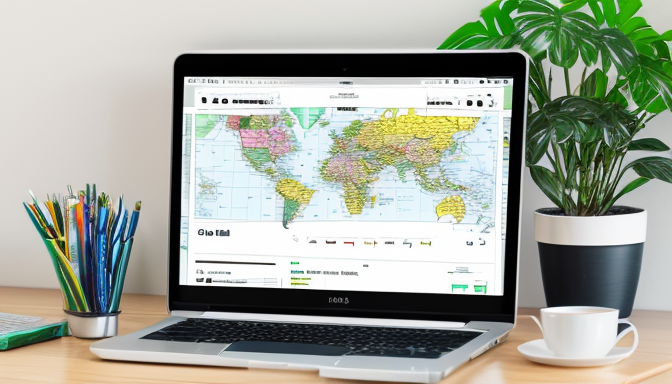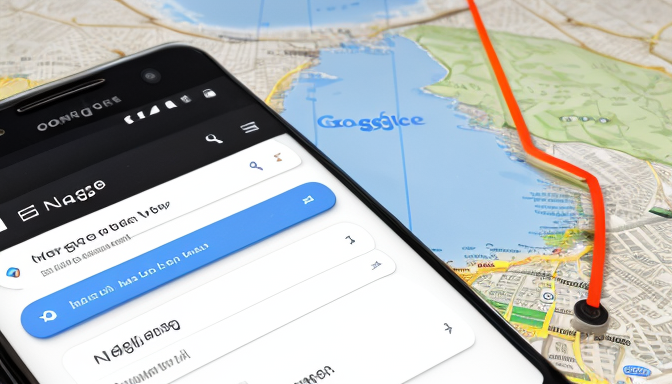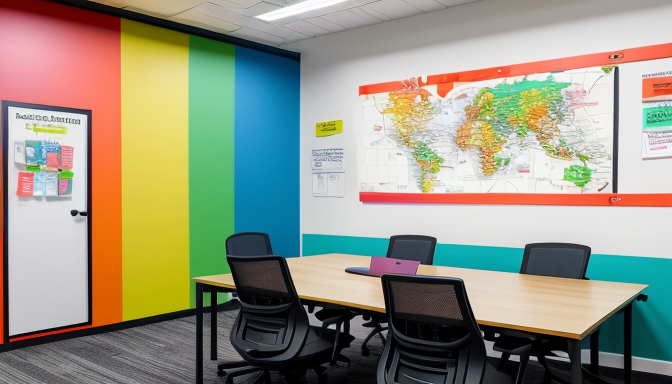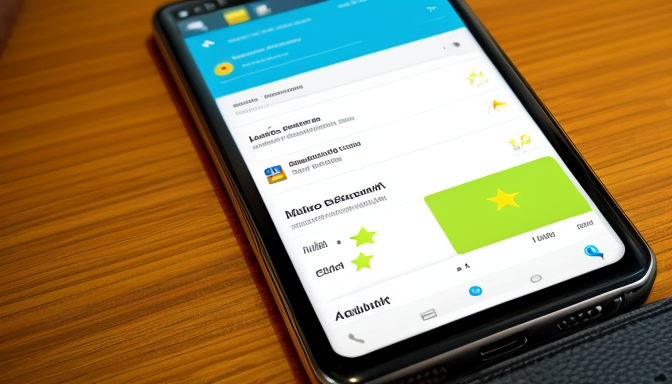
Outrank Rivals on google Maps
In today’s digital world, being visible on maps is more crucial than ever. It’s not just about having a location; it’s about being found. When potential customers search for services or products, they often turn to maps. This article will explore strategies to improve your visibility on maps, focusing on competitor analysis, profile optimization, citation building, and tracking progress to enhance your ranking and attract more customers.
Understanding your competitors is essential for effective map ranking. You may wonder, “How can I even start?” Well, analyzing your rivals is the first step. Look at their strategies. What keywords are they using? How do they engage their customers? Knowing this can reveal opportunities for you to gain an edge in local search results.
For instance, if you notice that a competitor uses certain keywords effectively, consider incorporating similar terms into your own strategy. Look for gaps. Maybe they aren’t targeting a specific audience or a niche. This could be your chance to shine! Remember, it’s not just about copying what they do; it’s about learning and improving.
Next up is profile optimization. Creating and maintaining optimized profiles on mapping platforms is crucial. Think of your profile as your business’s first impression. It needs to be accurate and engaging. Make sure all your information is correct. This includes your business name, address, and phone number. A small mistake can lead customers astray.
Visuals matter too! Engaging images can make your profile pop. Consider using high-quality photos that showcase your products or services. And don’t forget about keywords! Including relevant keywords in your profile can increase your chances of being favored by search algorithms. This way, when someone searches for services you offer, your business stands out.
Citations play a vital role in local SEO. What are citations, you ask? Simply put, they are mentions of your business on other websites. Establishing consistent and high-quality citations across various platforms enhances your credibility and visibility. It’s like getting a stamp of approval from other sources.
To build citations effectively, you can:
- List your business on local directories.
- Ensure your information is consistent across all platforms.
- Engage with local blogs or websites for mentions.
Each citation boosts your chances of outranking competitors on maps. The more credible your business appears, the more likely customers will choose you over others.
In conclusion, the journey to outrank rivals on maps is not an overnight task. It requires careful planning, consistent efforts, and a keen eye on competitors. By studying rivals, optimizing profiles, and building citations, you can significantly improve your visibility. Remember, every small step counts in this competitive landscape. So, roll up your sleeves and get started!

Study Rivals to Outrank on Maps
Understanding your competitors is essential for effective map ranking. Why? Because knowing what they do can help you find your own path to success. Think of it like a treasure hunt. The more clues you gather, the closer you get to the prize. Start by analyzing their strategies. Look at how they present themselves on mapping platforms. What keywords do they use? What kind of images do they share? These insights can be your secret weapon.
Take a moment to explore their customer engagement. Are they responding to reviews? How often do they post updates? This information can reveal a lot about their strengths and weaknesses. For instance, if you notice a competitor has a high rating but few responses to reviews, there’s an opportunity. You can engage more actively with your customers. This can set you apart and draw more attention to your profile.
Next, let’s talk about keywords. Keywords are like the breadcrumbs that lead customers to your door. Use tools like Google Keyword Planner or Ahrefs to find out what terms your competitors rank for. Here’s a simple approach:
- List the top keywords your rivals use.
- Check their search volume and competition level.
- Identify gaps where you can shine with your unique offerings.
After gathering this data, create a table to visualize your findings. This can help you spot trends and opportunities at a glance. For example:
| Competitor | Top Keywords | Engagement Level |
|---|---|---|
| Competitor A | Local Bakery, Fresh Bread | High |
| Competitor B | Gourmet Cakes, Custom Orders | Medium |
| Competitor C | Organic Pastries, Delivery | Low |
With this information, you can craft your strategy. Maybe you notice that no one is focusing on organic ingredients in your area. That’s your chance to shine! Highlight this in your profile. Use it in your content. Make it a part of your brand story. This will not only improve your visibility but also attract customers who value what you offer.
Finally, remember that studying your rivals is not a one-time task. It’s an ongoing process. Keep an eye on their moves. Stay updated with their changes. This way, you can adapt and keep your edge. By continuously analyzing your competitors, you’ll be better positioned to outrank rivals on maps and draw more customers to your business.

Optimize Profiles to Outrank on Maps
When it comes to outranking rivals on maps, optimizing your profiles is like polishing a gem. You want it to shine bright so that everyone notices it. Think about your profile as your business’s first impression. If it’s dull or incomplete, potential customers might just scroll past. So, how do you make your profile sparkle?
First off, ensure that all your information is accurate. This includes your business name, address, and phone number (often referred to as NAP). Inconsistent information can confuse search engines and customers alike. If your address is listed differently on various platforms, it’s like giving mixed signals. You want to be clear and consistent. Here’s a quick checklist:
- Business Name: Make sure it matches your signage.
- Address: Double-check for typos.
- Phone Number: Use a local area code if possible.
Next, let’s talk about visuals. A picture is worth a thousand words, right? High-quality images of your products or services can draw customers in like moths to a flame. Think of it this way: if you were shopping online, would you choose a product with a blurry image or one that looks crisp and inviting? Exactly! Use engaging visuals to showcase what you offer. This not only makes your profile more appealing but also helps in outranking rivals on maps.
Don’t forget about keywords! These are the magic words that help people find you. Use relevant keywords in your profile description. Think about what your customers might search for. Are they looking for “best pizza in town” or “affordable plumbing services”? Use these phrases naturally in your text. However, avoid stuffing your profile with keywords. It should read smoothly, as if you were chatting with a friend.
Another important aspect of profile optimization is customer engagement. Encourage happy customers to leave reviews. Positive reviews not only boost your credibility but also improve your visibility on maps. It’s like having a friend vouch for you. The more authentic voices you have backing your business, the better. Respond to reviews, both good and bad. This shows that you care about your customers and are engaged in the community.
Lastly, keep track of your progress. Use analytics tools to see how your profile is performing. Are you getting more views? Are customers calling more often? This data can help you tweak your profile further to ensure you’re always outranking rivals on maps. Remember, optimization is not a one-time task; it’s an ongoing process. Stay attentive, and don’t be afraid to adjust your strategy as needed.
In conclusion, optimizing your profiles is crucial for outranking rivals on maps. By ensuring accuracy, using engaging visuals, incorporating the right keywords, fostering customer engagement, and tracking your progress, you set yourself up for success. So, roll up your sleeves and get to work on that profile. Your customers are waiting!

Build Citations to Outrank on Maps
Building citations is like laying down the bricks of your online presence. When you think about it, citations are references to your business name, address, and phone number (NAP) across various platforms. These references help search engines understand where you are and what you do. They also play a crucial role in boosting your visibility on maps. So, how can you effectively build citations to outrank on maps? Let’s dive into it!
First off, consistency is key. Imagine you’re trying to find a restaurant, but you see different addresses listed on various websites. Confusing, right? The same goes for your business. Ensure that your NAP is consistent across all platforms. This includes your website, social media profiles, and local directories. If search engines see discrepancies, they may question your credibility. And we don’t want that!
Next, focus on quality over quantity. It’s tempting to list your business everywhere, but not all citations are created equal. Aim for reputable sites. Here are a few types of citations you should consider:
- Local directories (like Yelp or Yellow Pages)
- Industry-specific directories (if you’re a plumber, list on plumbing directories)
- Social media platforms (Facebook, Instagram)
- Review sites (Google My Business, TripAdvisor)
Now, let’s talk about the power of local SEO. By building citations on local platforms, you can significantly improve your chances of being found in local searches. Think of it as planting seeds in a garden. The more you plant, the more likely you are to grow a beautiful flower bed. For example, if you’re a coffee shop in Seattle, getting listed on local Seattle directories can help you attract more coffee lovers in your area.
Another important aspect is to encourage your customers to leave reviews. Positive reviews can enhance your citations and improve your ranking on maps. When potential customers see that others have had great experiences with your business, they are more likely to choose you over your competitors. So, don’t hesitate to ask for feedback!
Finally, tracking your progress is essential. Use tools like Google My Business to monitor your citations and see how they impact your visibility. It’s like checking your garden’s growth after watering it. Are those seeds sprouting? Are your citations helping you outrank on maps? If not, you may need to adjust your strategy.
In conclusion, building citations is a vital step in your journey to outrank on maps. By ensuring consistency, focusing on quality, leveraging local SEO, encouraging reviews, and tracking your progress, you can enhance your online presence and attract more customers. Remember, every citation is a stepping stone towards greater visibility!
Frequently Asked Questions
- How can I analyze my competitors for better map ranking?Analyzing your competitors is like peeking at their playbook! Start by identifying their keywords, customer reviews, and overall engagement. Use tools like Google My Business and local SEO software to see what they’re doing right. This insight can help you find gaps and opportunities to outshine them in local searches.
- What should I include in my map profile to optimize it?Your map profile is your digital storefront, so make it eye-catching! Ensure all your information is accurate—think name, address, and phone number (NAP). Add high-quality images and include relevant keywords in your description. The more engaging and informative your profile, the more likely it is to attract potential customers.
- Why are citations important for my local SEO?Citations are like votes of confidence for your business! They help establish your credibility across the web. When your business is consistently listed in directories and local sites, it signals to search engines that you’re a legitimate player in your area. This consistency can significantly boost your visibility and help you outrank competitors.
- How do I track my progress in map rankings?Tracking your progress is essential to see if your strategies are working. Use tools like Google Analytics and local SEO dashboards to monitor your rankings over time. Look for changes in visibility, customer engagement, and website traffic. If you notice improvements, keep doing what works; if not, it’s time to tweak your approach!
- How often should I update my map profile?Think of your map profile as a living document—it needs regular updates! Whenever there’s a change in your business, like new hours or services, make sure to update your profile. Regularly refreshing your content keeps it relevant and engaging for potential customers, which can help improve your ranking.



